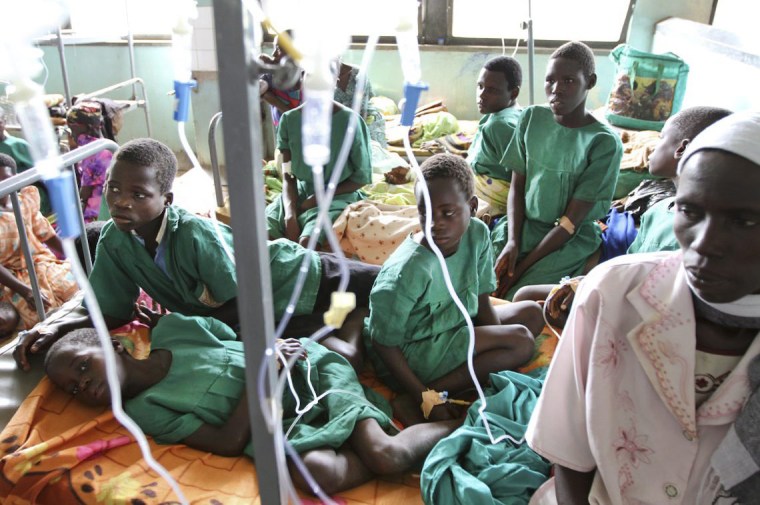Ugandan officials say 22 students and a teacher died after lightning struck their school in the country's midwest.
Local police spokeswoman Zura Ganyana said Wednesday that 51 students between the ages of 7 and 16 were injured Tuesday. She said the teacher who died was visiting the Runyanya primary school, about 160 miles (some 260 kilometers) west of Uganda's capital.
Zombo education official John Ojobi says another school 200 miles (some 320 kilometers) northwest of Kampala was also hit by lightning Tuesday, injuring 37 students and two teachers.
Meteorology experts say school buildings are being hit because they don't have lightning conductors and are built on high ground.
In the past few weeks, lightning strikes around the country, which has been experiencing unseasonably heavy rains, have killed at least 38 people.
Uganda has one of the highest rates of lightning strike deaths in the world and its capital Kampala has more days of lightning per year than any other city, according to the World Meteorological Organization.
The recent lightning strike deaths were debated in parliament on Monday, with MPs calling on the government to come up with strategy to deal with what several termed "a crisis."
"I don't know which minister is in charge of the lightning but let the government come up with a statement to inform the country on what is going on and how we can manage it," Speaker Rebecca Kadaga said.
Local meteorologists have criticised the government for not providing enough lightning conductors for buildings in storm hot spots.
